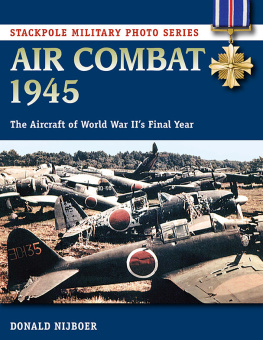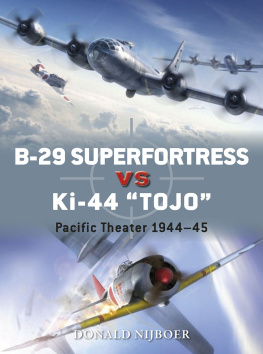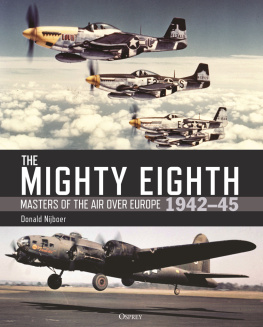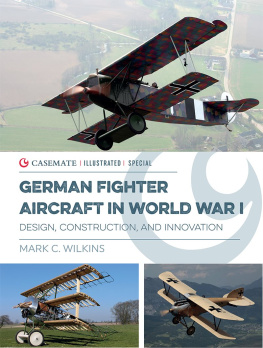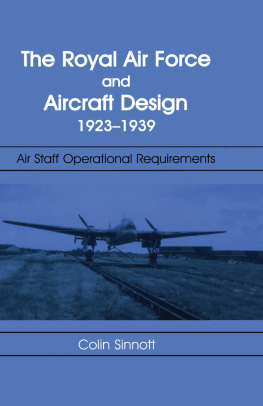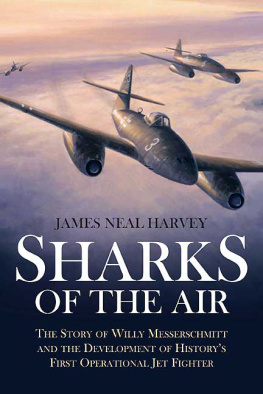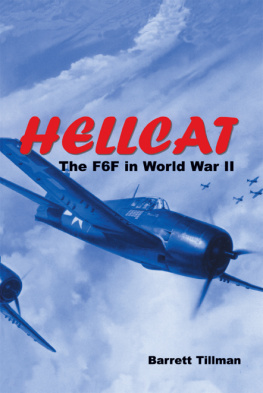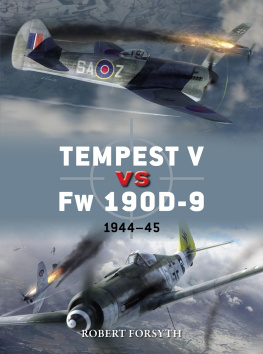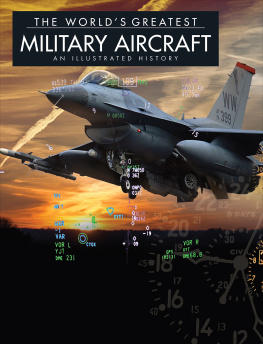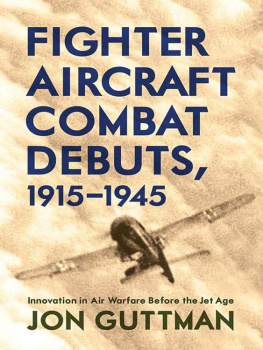Copyright 2015 by Donald Nijboer
Published by
STACKPOLE BOOKS
5067 Ritter Road
Mechanicsburg, PA 17055
www.stackpolebooks.com
All rights reserved, including the right to reproduce this book or portions thereof in any form or by any means, electronic or mechanical, including recording or by any information storage and retrieval system, without permission in writing from the publisher. All inquiries should be addressed to Stackpole Books, 5067 Ritter Road, Mechanicsburg, PA 17055.
Printed in the United States of America
10 9 8 7 6 5 4 3 2 1
Cover design by Caroline Stover
Library of Congress Cataloging-in-Publication Data
Nijboer, Donald, 1959
Air combat 1945 : the aircraft of World War IIs final year / Donald Nijboer.
pages cm. (Stackpole military photo series)
ISBN 978-0-8117-1606-2
eISBN 978-0-8117-6242-7
1. World War, 1939-1945Aerial operationsPictorial works. 2. Airplanes, MilitaryHistory20th centuryPictorial works. I. Title.
D785.N55 2015
940.544dc23
2015012452
CONTENTS


Shortly after dawn on January 1, 1945, the Luftwaffe unleashed 986 single-seat fighters, including twenty-four Me 262s, against Allied tactical airfields in Operation Bodenplatte. No. 439 Squadron RCAF was one of the victims, with a number of Typhoons destroyed at its Eindhoven base.

A Halifax Mk III of No. 420 Squadron RCAF prepares for takeoff in January 1945. The aircraft is equipped with a single .50-caliber machine gun in its ventral Preston-Green turret. Starting in December 1943, No. 420 Squadron was equipped with Halifaxes and flew them until the end of the war. In the squadrons last successful mission of World War II, eighteen Halifaxes bombed Heligoland. DND

A Halifax Mk III of No. 426 Squadron at dispersal. Based at Linton-on-Ouse, No. 426 Squadron flew as part of No. 6 Group RCAF and was equipped with both the Halifax Mk III and Mk VII from April 1944 until May 1945. The squadron lost 36 aircraft in 149 bombing operations. DND

A Halifax Mk III from No. 426 Squadron takes to the air on March 17, 1945. The Hercules-engine Halifax proved as resilient as it was popularfour of these aircraft finished the war with more than 100 operational missions over Germany. Frequently overshadowed by the well-known Avro Lancaster, the Halifaxs huge contribution to Bomber Commands war effort is often forgotten. At its peak, the Halifax force comprised 35 squadrons with 1,500 aircraft. DND

A Canadian-built Mk X Lancaster of No. 419 Squadron RCAF snowed in on January 11, 1945. A total of 430 Mk Xs were built in Canada, with No. 419 Squadron receiving its first example in early 1944. In June 1945 the squadron flew its Lancasters back to Canada and was disbanded three months later. DND

Lancaster KB-732 VR-X, X-Terminator, of No. 419 Squadron RCAF, with its bomb log of seventy-five operational sorties proudly painted on the nose. No. 6 Group RCAF flew 40,822 sorties during the course of the war with a loss of 4,272 aircrew killed in operations. DND

April 5, 1945. Two Lancaster Mk Xs of No. 419 Squadron RCAF on the ground at Middleton St-George, Durham. On April 25, No. 419 Squadron flew its last mission of the war, with fifteen Lancasters bombing the gun batteries on the island of Wangerooge. DND

Nineteen Lancasters of No. 617 Dambusters Squadron attack the railway viaduct at Arnsberg on March 19, 1945. Six dropped the massive 22,000-pound Grand Slam bomb and the remainder dropped the 12,000-pound Tallboy bomb. A 40-foot (12-meter) gap was blown out of the viaduct and the structure was severely damaged. DND

April 1945. A No. 617 Squadron RAF Lancaster Mk I (Special) is bombed up with a single 22,000-pound Grand Slam bomb. To improve accuracy, the Lancasters of No. 617 Squadron were equipped with the new gyro-stabilized SABS (Stabilized Automatic Bombsight). Only the Lancaster was capable of carrying the Grand Slam; with a regular bomb load, it could carry 14,000 pounds over a range of 1,040 miles. DND

Toward the end of 1944, Bomber Command was planning daylight operations over Germany. The need for turrets armed with heavy-caliber guns was given priority. In response, Nash & Thompson produced the FN82 tail turret in 1945. Armed with two .50-caliber machine guns, it was further enhanced by the deadly Mk IID gyro gunsight and a radar blind-firing system.

This impressive aerial photograph shows twelve Lancasters of No. 428 Ghost Squadron RCAF lined up nose to tail on May 31, 1945, the day they left for Canada. Eight RCAF squadrons, including No. 428, had been selected to participate in the war against Japan as part of Tiger Force. DND

The Lancaster Mk X was the Canadian version of the famous Avro bomber. Built by Victory Aircraft in Malton, it differed from the English version in a number of ways. The engines installed were Packard-built Merlin 38s or 224s, and all instruments and radio equipment were of Canadian or American manufacture. The first Lancaster Mk Xs had Frazer-Nash-manufactured mid-upper turrets. After the 168th machine had been produced, these were replaced by the U.S.-built, electrically powered Martin mid-upper turret with two .50-caliber machine guns. A total of 430 Mk X Lancasters were built, and 100 lost to all causes.

Direct hit. This is one of a handful of photographs that show an aircraft blowing up in midair. This No. 3 Group Lancaster was lost, mostly likely to a direct hit by flak, over Wesel on February 19, 1945. Of the 168 Lancasters sent out, it was the only one shot down.

